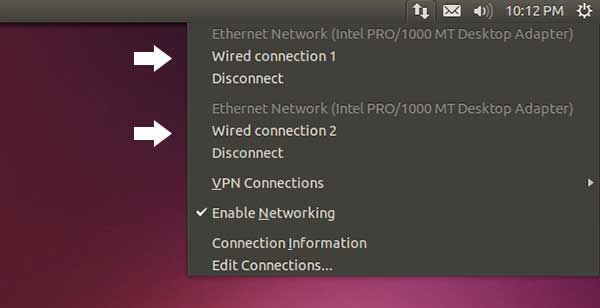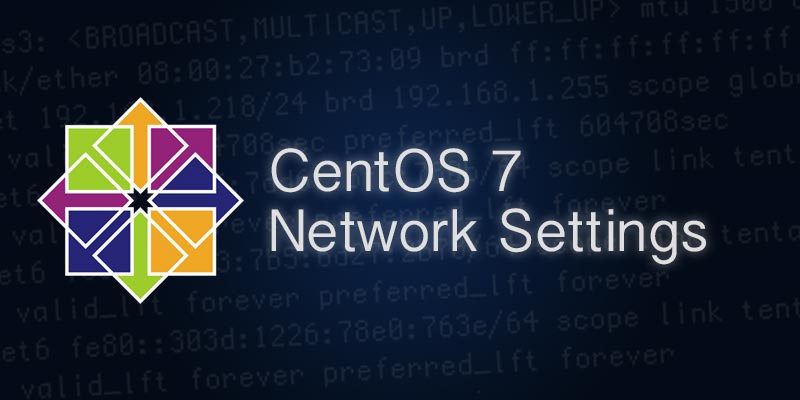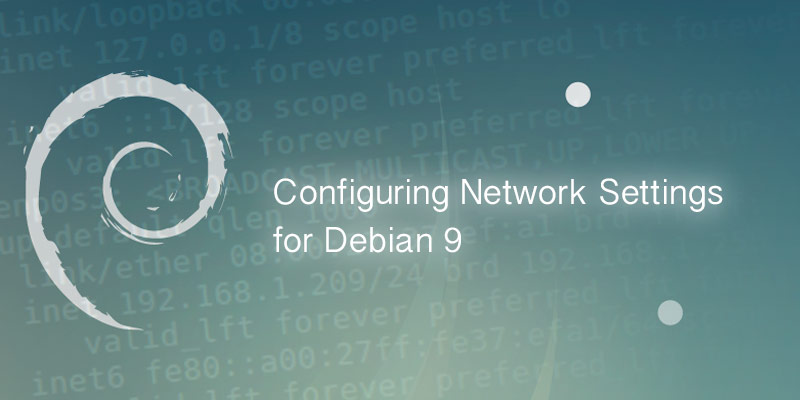Overview
Bonding network interfaces allows you to enhance your network services by allowing you to create fault-tolerance, increase network availability through load balancing, or increase your server’s network bandwidth. This tutorial will guide you through configuring bonding for Ubuntu 13.04 or higher.
Prerequisites
- Two or more network interface cards.
- The MAC address (Hardware Address) of each network interface card. This can be found printed on the physical card or in a virtual server’s network hardware settings.
- All interfaces connected to the same network.
- An 802.3ad capable switch (for more advanced bonding only).
Lab Server Configuration
To make it easier for you to follow along, our server will have the following configurations.
| Network Interface | Interface Name | MAC Address |
|---|---|---|
| NIC #1 | eth0 | 00:0c:29:58:65:cc |
| NIC #2 | eth1 | 00:0c:29:58:65:d6 |
And when the network bond is created, the server will be assigned the following network settings:
| IP Address | Subnet | Gateway | DNS Server |
|---|---|---|---|
| 172.30.0.77 | 255.255.255.0 | 172.30.0.1 | 172.30.0.5 |
Enabling NIC Bonding
- Out of the box, Ubuntu will not be able to bond network interfaces. You need to install the bonding kernel module by installing the ifenslave package.
sudo apt-get install ifenslave
- To enable the newly installed module, stop the network service.
sudo stop networking
- Now enable the bonding kernel module.
sudo modprobe bonding
Creating the Network Interfaces
- Open the network interface configuration file into a text editor, like VI.
sudo vi /etc/network/interfaces
- To create a fault-tolerance bond, which we’ll call bond0, that uses interface 1 (eth0) and interface 2 (eth1) add the following lines.
# Network bond for eth0 and eth1 auto bond0 iface bond0 inet static address 172.30.0.77 netmask 255.255.255.0 gateway 172.30.0.1 bond-mode 1 bond-miimon 100 slaves eth0 eth1
- Add the following lines to configure interface 1 (eth0) as a slave for bond0. It’s very important to assign the interface the MAC address of the NIC you expect it to use. Without, you may not know which NIC the interface eth0 is assigned to, which is crucial when doing maintenance.
# eth0 - the first network interface auto eth0 iface eth0 inet manual hwaddress ether 00:0c:29:58:65:cc bond-master bond0
- Add the following lines to configure interface 2 (eth1) as a slave for bond0. Just as we did for eth0, remember to add the MAC address.
# eth1 - the second network interface auto eth1 iface eth1 inet manual hwaddress ether 00:0c:29:58:65:d6 bond-master bond0
- The configuration file should now look similar to the following example. Remember to modify the highlighted values to match your environment.
# This file describes the network interfaces available on your system # and how to activate them. For more information, see interfaces(5). # The loopback network interface auto lo iface lo inet loopback # The first network bond auto bond0 iface bond0 inet static address 172.30.0.77 netmask 255.255.255.0 gateway 172.30.0.1 bond-mode 1 bond-miimon 100 slaves eth0 eth1 #eth0 - the first network interface auto eth0 iface eth0 inet manual hwaddress ether 00:0c:29:58:65:cc bond-master bond0 #eth1 - the second network interface auto eth1 iface eth1 inet manual hwaddress ether 00:0c:29:58:65:d6 bond-master bond0
- Save your changes and exit the text editor.
- Bring the network services back online.
sudo start networking
Validating the Connection
Now that the bond is created we need to test it to ensure it is functioning properly.
- Run the following command to check the bond.
cat /proc/network/bonding/bond0
- If successful, the output should look similar to this:
Ethernet Channel Bonding Driver: v3.7.1 (April 27, 2011) Bonding Mode: fault-tolerance (active-backup) Primary Slave: None Currently Active Slave: eth1 MII Status: up MII Polling Interval (ms): 100 Up Delay (ms): 0 Down Delay (ms): 0 Slave Interface: eth1 MII Status: up Speed: 1000 Mbps Duplex: full Link Failure Count: 0 Permanent HW addr: 00:0c:29:58:65:d6 Slave queue ID: 0 Slave Interface: eth0 MII Status: up Speed: 1000 Mbps Duplex: full Link Failure Count: 0 Permanent HW addr: 00:0c:29:58:65:cc Slave queue ID: 0
- Now ping another network node or the local gateway to test connectivity. I’ll use the gateway IP mentioned earlier as an example.
ping 172.30.0.1
- If successful, you should see the following output:
PING 172.30.0.1 (172.30.0.1) 56(84) bytes of data. 64 bytes from 172.30.0.1: icmp_req=1 ttl=64 time=0.340 ms 64 bytes from 172.30.0.1: icmp_req=2 ttl=64 time=0.194 ms 64 bytes from 172.30.0.1: icmp_req=3 ttl=64 time=0.153 ms 64 bytes from 172.30.0.1: icmp_req=4 ttl=64 time=0.343 ms 64 bytes from 172.30.0.1: icmp_req=5 ttl=64 time=0.488 ms --- 172.30.0.1 ping statistics --- 5 packets transmitted, 5 received, 0% packet loss, time 3998ms rtt min/avg/max/mdev = 0.153/0.303/0.488/0.121 ms
Bonding Modes
In our example we used bond mode 1, which is used for basic fault-tolerance. The following are other options that can be used. For a complete list of options, view the Linux Ethernet Bonding Driver HOWTO documentation.
| Value | Description |
|---|---|
| balance-rr or 0 | Round-robin policy: Transmit packets in sequential order from the first available slave through the last. This mode provides load balancing and fault tolerance. |
| active-backup or 1 | Active-backup policy: Only one slave in the bond is active. A different slave becomes active if, and only if, the active slave fails. The bond’s MAC address is externally visible on only one port (network adapter) to avoid confusing the switch. This mode provides fault tolerance. The primary option affects the behavior of this mode. |
| balance-xor or 2 | XOR policy: Transmit based on [(source MAC address XOR’d with destination MAC address) modulo slave count]. This selects the same slave for each destination MAC address. This mode provides load balancing and fault tolerance. |





